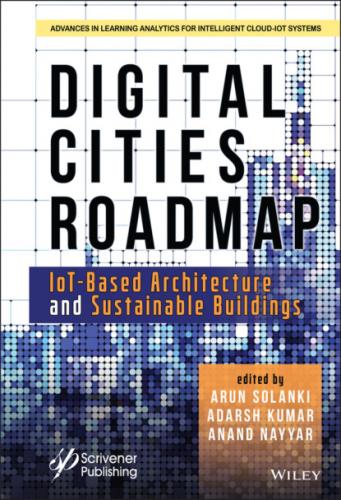Figure 1.19 Smart building appliances [52].
For apartment buildings typically have the bulk of the time with a small number of inhabitants. Rather than residential houses, the expenses involved with the procurement and development of intelligent equipment and services with industrial buildings are higher. Figure 1.20 shows an embedded socialized housing framework using an intelligent sensor network. Sensors include energy supply, estimation, HVAC, illumination and protection control systems. A building automation network operates a range of interconnected tools, sensors and actuators that together offer facilities for the well-being of citizens. Of starters, washers and drives, refrigerators, thermostats, lighting systems, power outlets, energy meters, smoke alarms, TVs, game consoles, window/door controls and alarms, air conditioning systems, video cameras and sound-detectors [36, 38, 39], are examples of these electronic appliances, sensors and actuators. These include advanced electronic systems like sophisticated floors and smart furnishings are continuously being built [40, 42].
Figure 1.20 Smart Residential Building Connected Sensors and Actuators.
1.10.3 Level if Clouds are the IoT Institute Level With SBs
To order to maintain optimum monitoring and activity of the design, the IoT enables the convergence Interconnection and transfer of data processing capacities in embedded devices to SBs in high definition. IoTs are based on a layer-dependent design as seen in Figure 1.21. Data collected from different sensing devices is obtained, which are able to track environmental conditions, gather data on the civilian community and identification of disturbances (e.g., bursts of flames and water pipes). This layer also contains actuators to be monitored for energy conservation, water usage minimization and so on.
In the network layer (second layer in Figure 1.21), there is a clear access and core networking potential. This layer is used to link the smart grid with the top layers accountable for the processing of data. An intermediate software layer known as the middleware layer (the third layer in Figure 1.21) is required to incorporate the design sensing layer smoothly into heteroscope devices and networks. The layer acts as a link between the embedded devices operating intelligent sensors and network backend services.
The context and the somaticized discovery layer (Figure 1.21, fourth layer) is responsible for the management of context and semanticized discovery, including context and semanticization generation. The analysis and reasoning layer (fifth layer in Figure 1.21) processes extracted knowledge from the middleware and takes decisions according to the application level. Various information retrieval systems are implemented in this layer to combine, retrieve and contextualize massive knowledge into practical know-how.
Figure 1.21 IoT smart resilience building architecture.
These included exceptional facilities and initiatives, an OSI model (Figure 1.20’s biggest layer). This layer offers a context with clear links to the fundamental functions for various forms of applications. In addition, panels for managing automatic, the residence will create confined environments and infrastructure for a regional human–computer interface. The residence will create confined environments and infrastructure for a regional human–computer interface.
Knowledge and the retrieval of information in the sense of implementation and decision-making and the last layer of operation, including health care and home elderly care, convenience and entertainment facilities, protection, tele-management, intelligent watering, and resource output etc. analyze the core features of residential and industrial structures.
1.10.4 Component of Smart Buildings (SB)
Advances in intelligent design technologies contribute to widespread production of SBs, with the integration of IT and building automation systems, creating advantages for housing developers efficient and sustainable. The core elements of SB systems are seen in Figure 1.6, which involve vast sensors and drives, networks and connectivity structures, a software interface framework and a smart control device [54]. Figure 1.22 reveals different smart building components.
New solutions use smart sensors and control units attached to a central network. Such control systems and intelligent sensors are installed in the whole area. Each device has its own network and communications array that enables the central system to interact. SBs run linked networks that act for several structures as a connectivity backbone.
Sensors and Actuators for SBs
Mechanical elements calculating and monitoring environmental values of their system are sensors and actuators. Sensors collect and make information ready for the system from the environment. IR sensors can, for example, be used in a room for detecting human presence. While the actuator is an instrument for converting an electronic power signal for physical activity, determines and then executes ecological acts that enable automated interaction, remotely and with the environment. For examples, one or more control lights may be turned on and off by an actuator.
Figure 1.22 Smart building components.
1 Environmental Sensors: Data obtained from environmental sensors may be used to shape valuable details for tracking human behavior inside an SB.
2 Wearable Sensors and Biosensors: Such sensors are linked to the consumer body directly or indirectly. The compact scale allows it easy to mount such sensors to clothing, wristwatches, shoes, ties, slippers, etc.
3 Heating, Ventilation, and Air Conditioning (HVAC): In SB infrastructure, the HVAC program plays a significant function. The HVAC device plays a significant function in the efficient usage of electricity in SBs and provides innovative operational solutions in order to increase the health of inhabitants.
Smart Control Devices
Smart tracking systems capture, process and enable data from a range of sensors to respond to sensor–sensor events. An intelligent control system may be run independently without a central server order. Nevertheless, different control devices that require connectivity or they are able to link to one another via the intelligent gateway (Table 1.3).
Table 1.3 Smart control devices [56].
| Sensor | Measurement | Calory |
| IR sensor | User presence in a room | Environmental sensors (ES) |
| Video cameras | Human actions |
|
